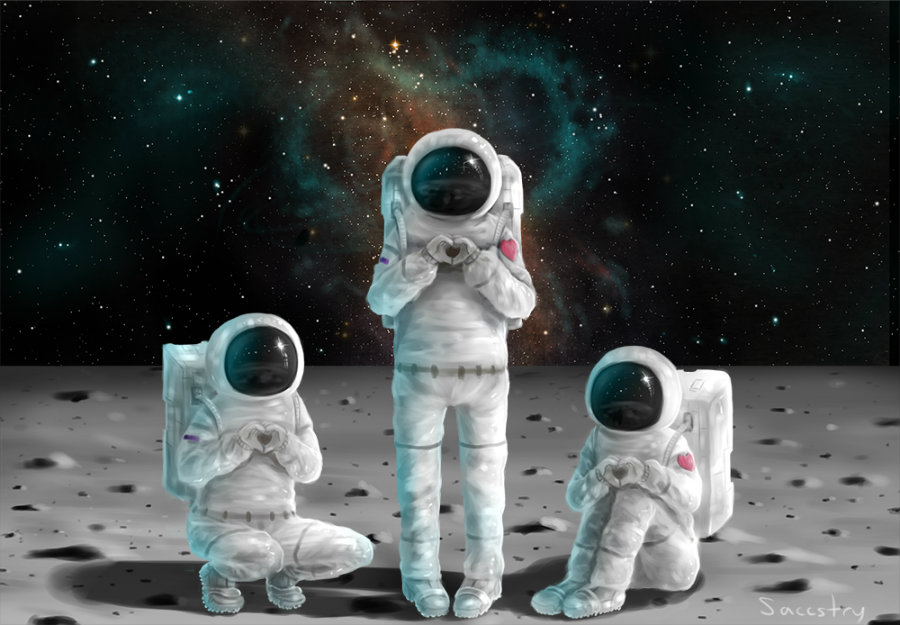According to new research, scientists might be able to turn astronauts’ urine and exhaled carbon dioxide into plastic and other nutrients that could be extremely useful in long-distance space journeys.
Waste management is one major issue for astronauts, especially in missions beyond the Earth. However, this new research from the Clemson University might have the perfect solution, not only to get rid of those wastes but to recycle them into something beneficial for astronauts. The key to achieve this lays on engineered yeast.

“If astronauts are going to make journeys that span several years, we’ll need to find a way to reuse and recycle everything they bring with them,” Mark A. Blenner, Ph.D., says. “Atom economy will become really important.”
Astronauts will be able to produce what they need in space
The idea of the researchers is that astronauts could use every single particle they have within reach. In space, they can’t take a lot of spare parts because every single molecule adds to the cost of fuel needed to escape Earth’s gravity. Therefore, they wanted to find the way astronauts can use even their own wastes, including those that are produced when eating, breathing or using materials. Therefore, the team studied how to give a new purpose to the exhaled CO2 or to urine to convert it in polyesters and nutrients.
“Having a biological system that astronauts can awaken from a dormant state to start producing what they need, when they need it, is the motivation for our project,” said Blenner from the Clemson University.
This biological system includes strains of yeast called Yarrowia lipolytic. They need nitrogen and carbon to grow. The research team noticed that the required nitrogen could be obtained from urea in untreated urine, while carbon could be obtained from the CO2 that astronauts produce as they exhale or from the Martian atmosphere. However, there is a little complication here, because the yeast requires a middleman to “fix” the carbon so it is in the way that could be ingested by the yeast. To attain this, the yeast relies on photosynthetic cyanobacteria or algae provided by the researchers.

The benefit of engineered yeast strains in space
Researchers explained that one of the yeast strains would be able to produce omega-3 fatty acids, which can improve the health of heart, eyes, and brain. Another strain of engineered yeast will contribute to the creation of polyester polymers. These polymers might come handy for astronauts to create plastic parts using a 3-D printer. They continue to work to develop other strains that could produce a great variety of monomers that can be polymerized into other types of polyesters.
At the moment, the engineered yeast can only generate small amounts of polyesters or nutrients, but the team wants to maximize their utility so they are studying how they can boost the output of the strains.
The scientists presented the results of their research “Biosynthesis of materials and nutraceuticals from astronaut waste: Towards closing the loop” today at the 25th National Meeting & Exposition of the American Chemical Society (ACS), which is the world’s largest scientific society. This year, it will meet until Thursday where more than 9,400 scientific research and proposals will be presented. The ACS is a not-for-profit organization that gives access to chemistry-related information and research. Blenner’s work was supported by an Early Career Faculty grant from NASA’s Space Technology Research Grants Program.
Could this technology be used on Earth?
Though their work is centered in the way astronaut’s wastes could be efficiently used with the help of engineered yeast in long-distance space travels, that doesn’t mean the Blenner’s team is not thinking about how that technology and knowledge could have application down here on planet Earth. They say that this could be used in fish farming and human nutrition. An example of this is the fact that fish that are raised via aquaculture need to receive omega-3 fatty acid supplements that could be produced with the team’ super yeast strains.
Moreover, they are not the only ones who’ve been thinking about this. Blenner explained other researchers are working with yeast, although with a different approach. Other two teams are using the yeast to create polyesters, but they are not engineering the organisms to optimize the produce polyesters. Another team from DuPont is also using yeast for the production of omega-3 fatty acids for aquaculture. The difference between this team and Blenner’s is that the yeast is fed on refined sugar instead of waste products.
“We’re learning that Y. lipolytica is quite a bit different than other yeast in their genetics and biochemical nature,” Blenner says. “Every new organism has some amount of quirkiness that you have to focus on and understand better.”
Source: EurekAlert!
